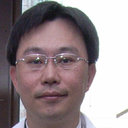Quantitative physiology and immunohistochemistry of oral lesions.
Parole chiave
Astratto
Angiogenesis and hypoxia are reported to correlate with tumor aggressiveness. In this study, we investigated the potential of optically measured total hemoglobin concentration (THC) and blood oxygen saturation (StO2) as a quantitative measure of angiogenesis and hypoxia in oral lesions with an immunohistochemical comparison. 12 normal subjects and 40 oral patients (22 oral squamous cell carcinoma (SCC), 18 benign/premalignant lesions including 11 verrucous hyperplasia (VH) and 7 hyperkeratosis/parakeratosis (HK)) were studied. The results showed that the THC measurement was consistent with vascular endothelial growth factor (VEGF) and microvessel staining in the stromal area, but StO2 was not associated with HIF-1α. We observed inflammation induced neovascular formation in the stromal area of VH and HK that were likely attributed to higher-than-control THC and StO2 and resulted in no difference in optical measurements between all lesions. However, we found that in majority of SCC, the ratio of THC and StO2 levels between lesions and the surrounding tissues provide potential distinguishing characteristics from VH, which are not visually differentiable from SCC, with a sensitivity, specificity, and accuracy of 91%, 68%, and 76%, respectively.


